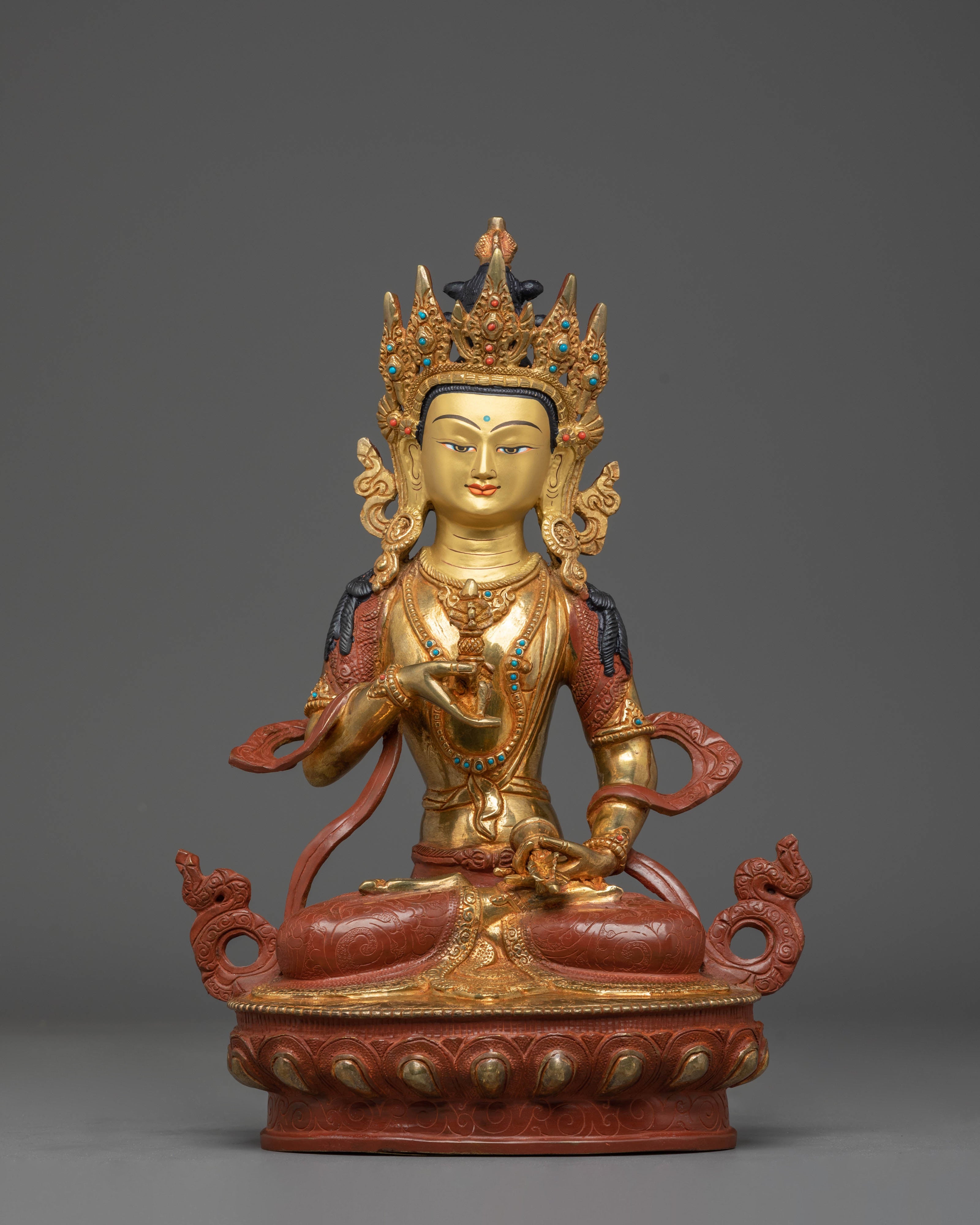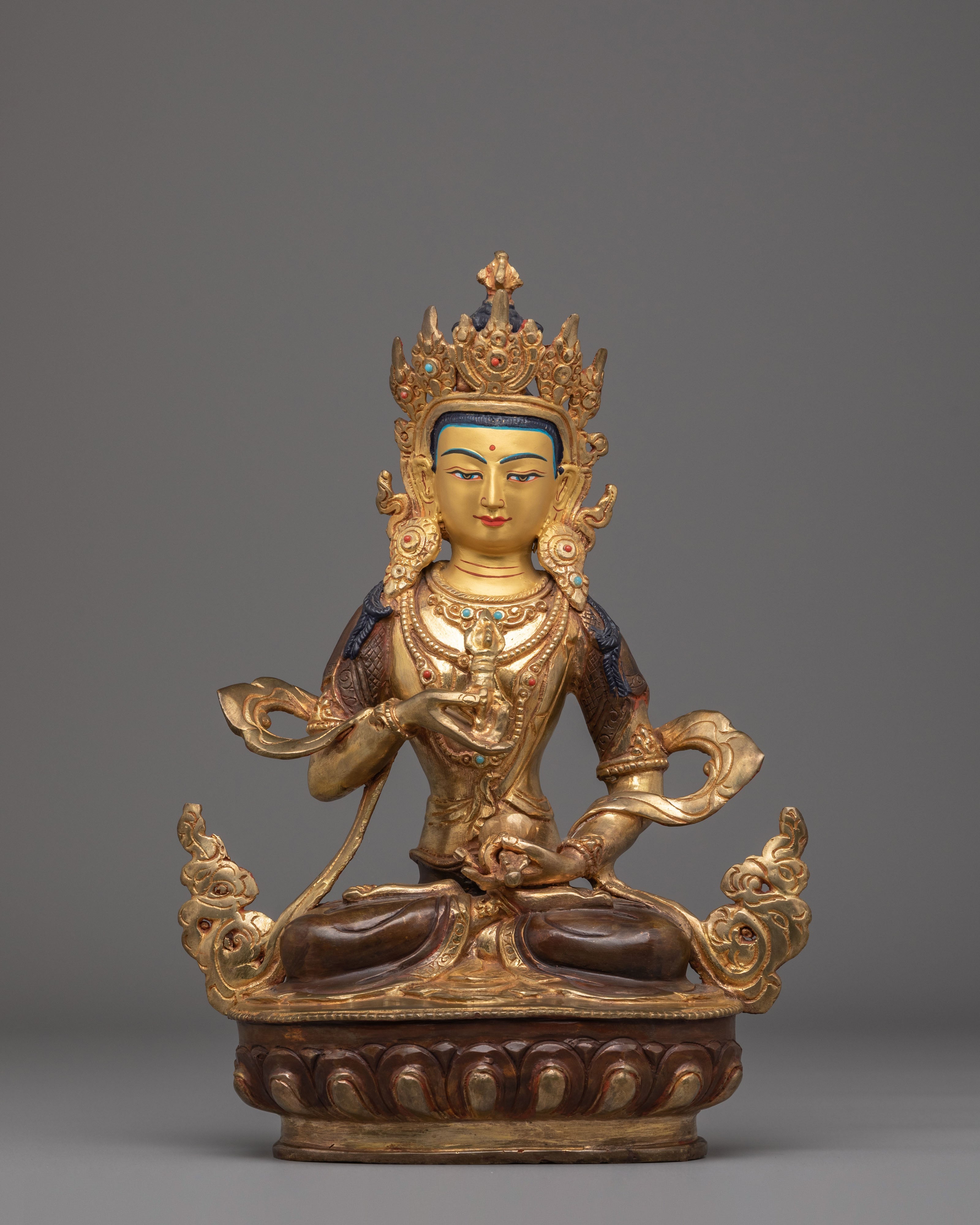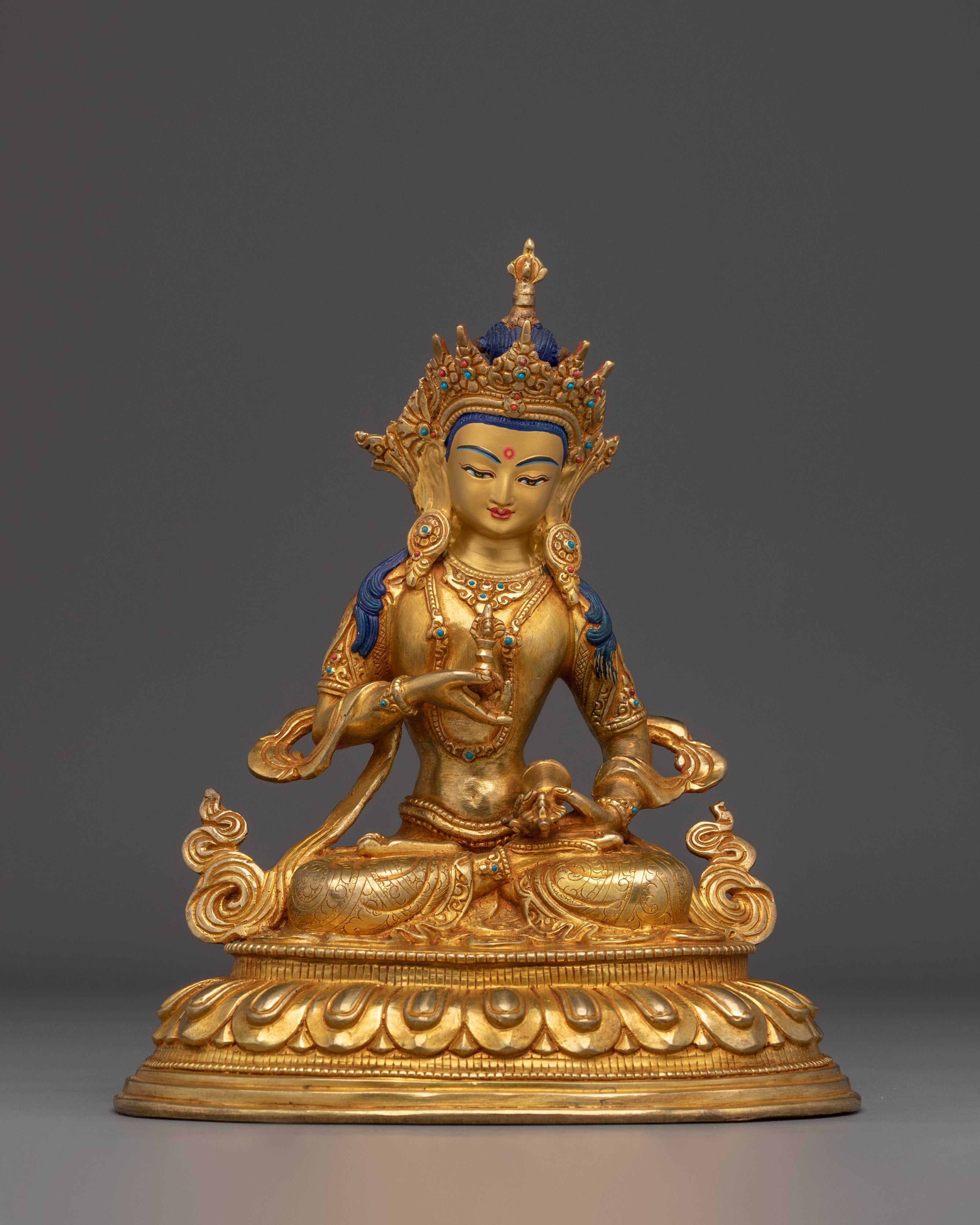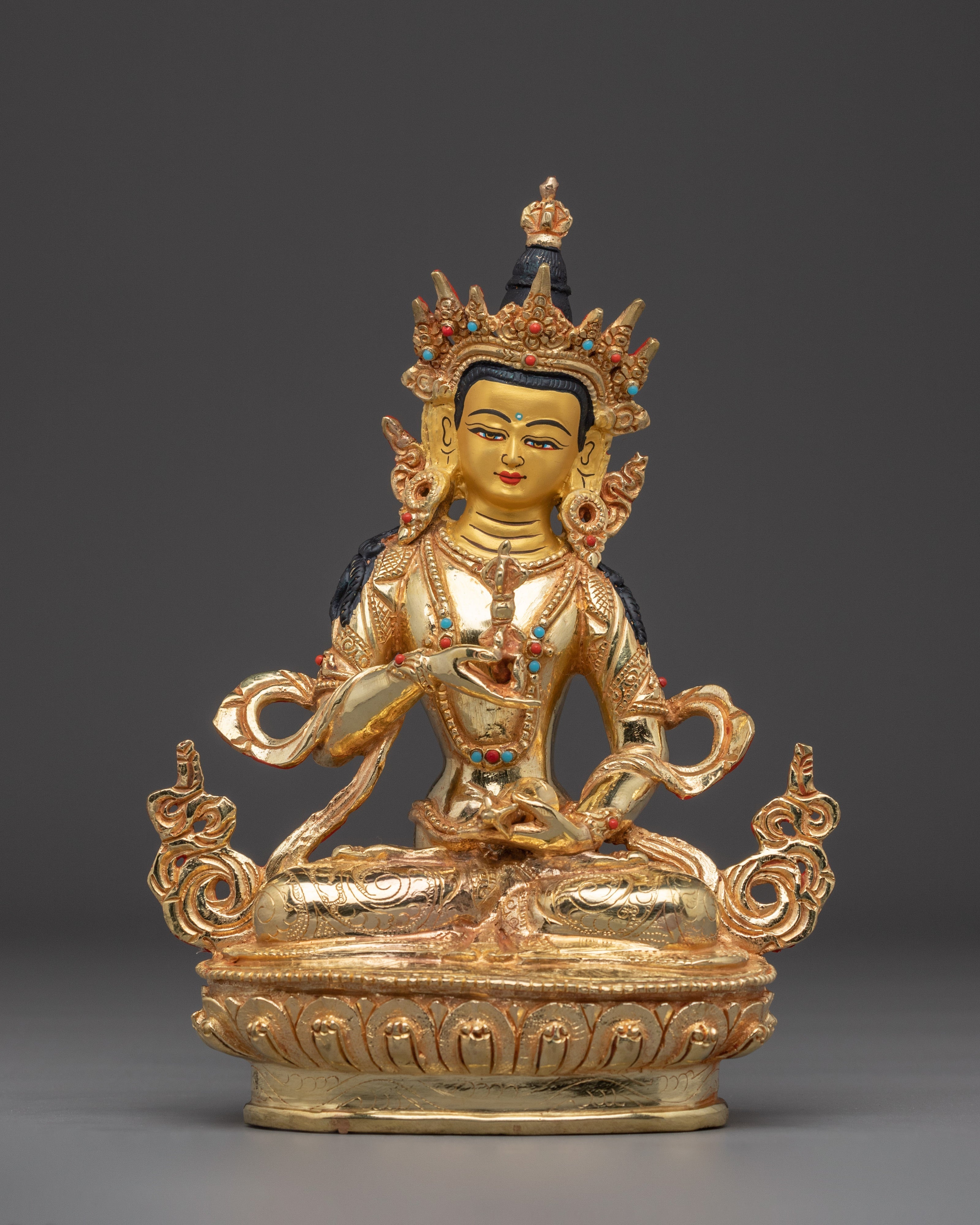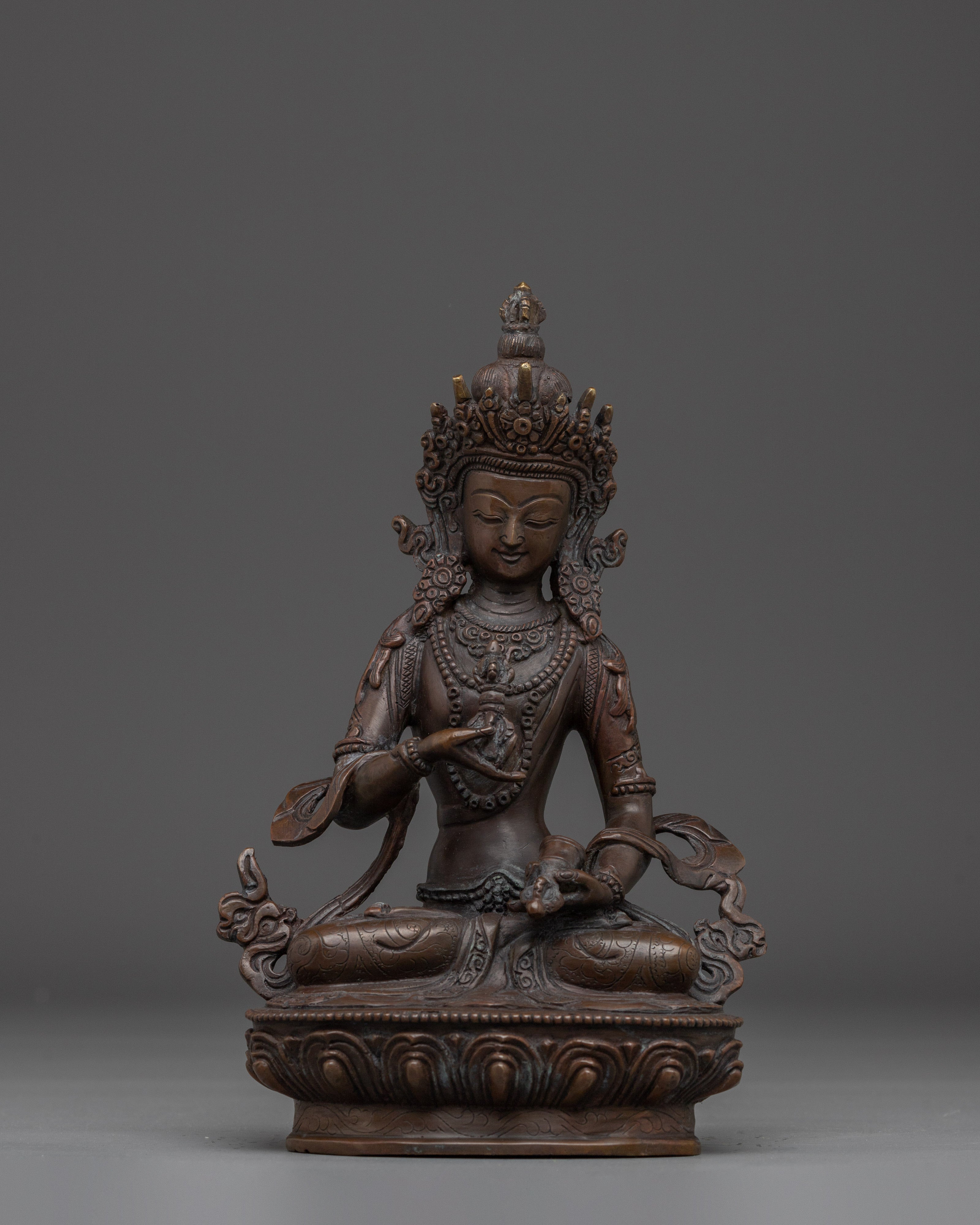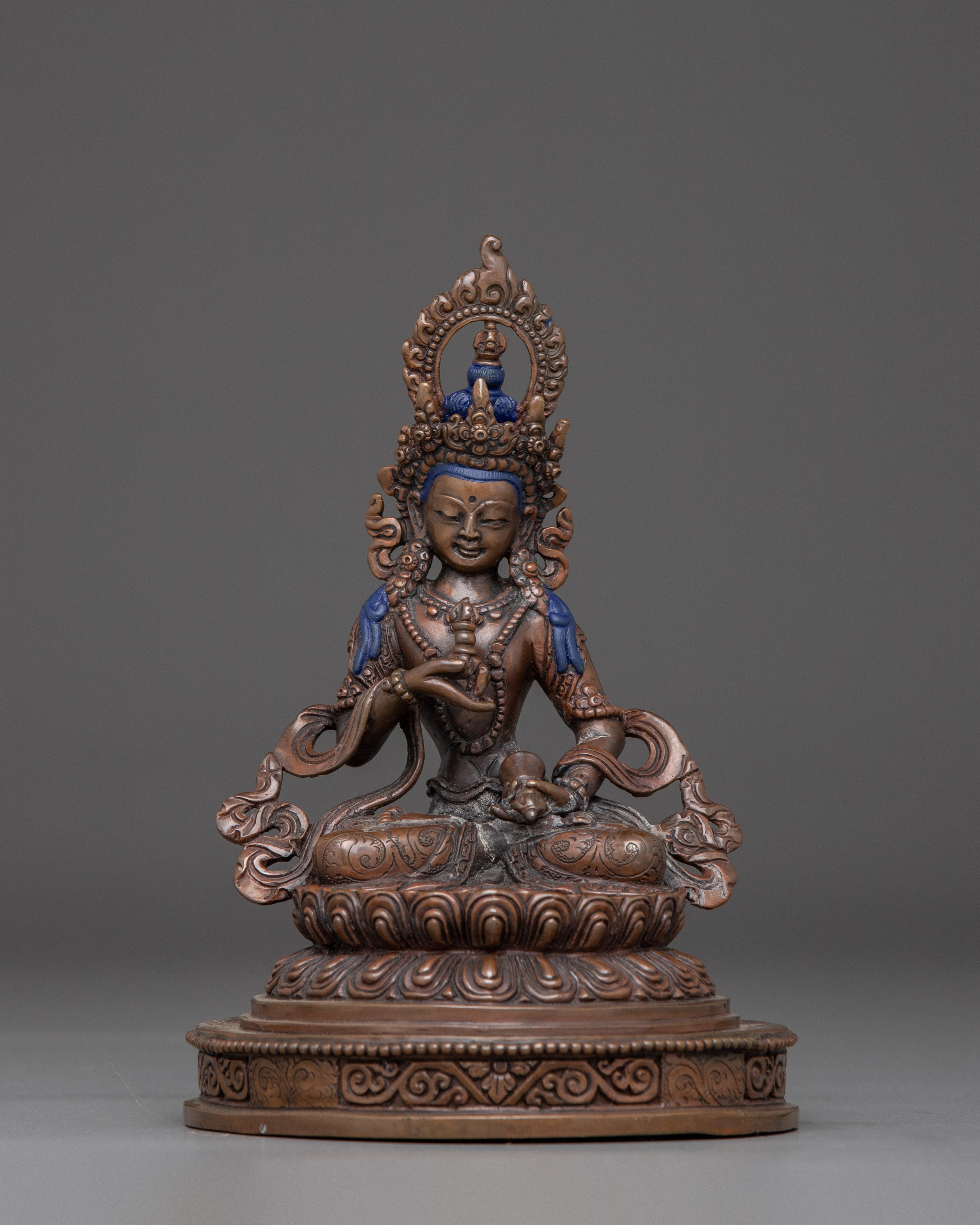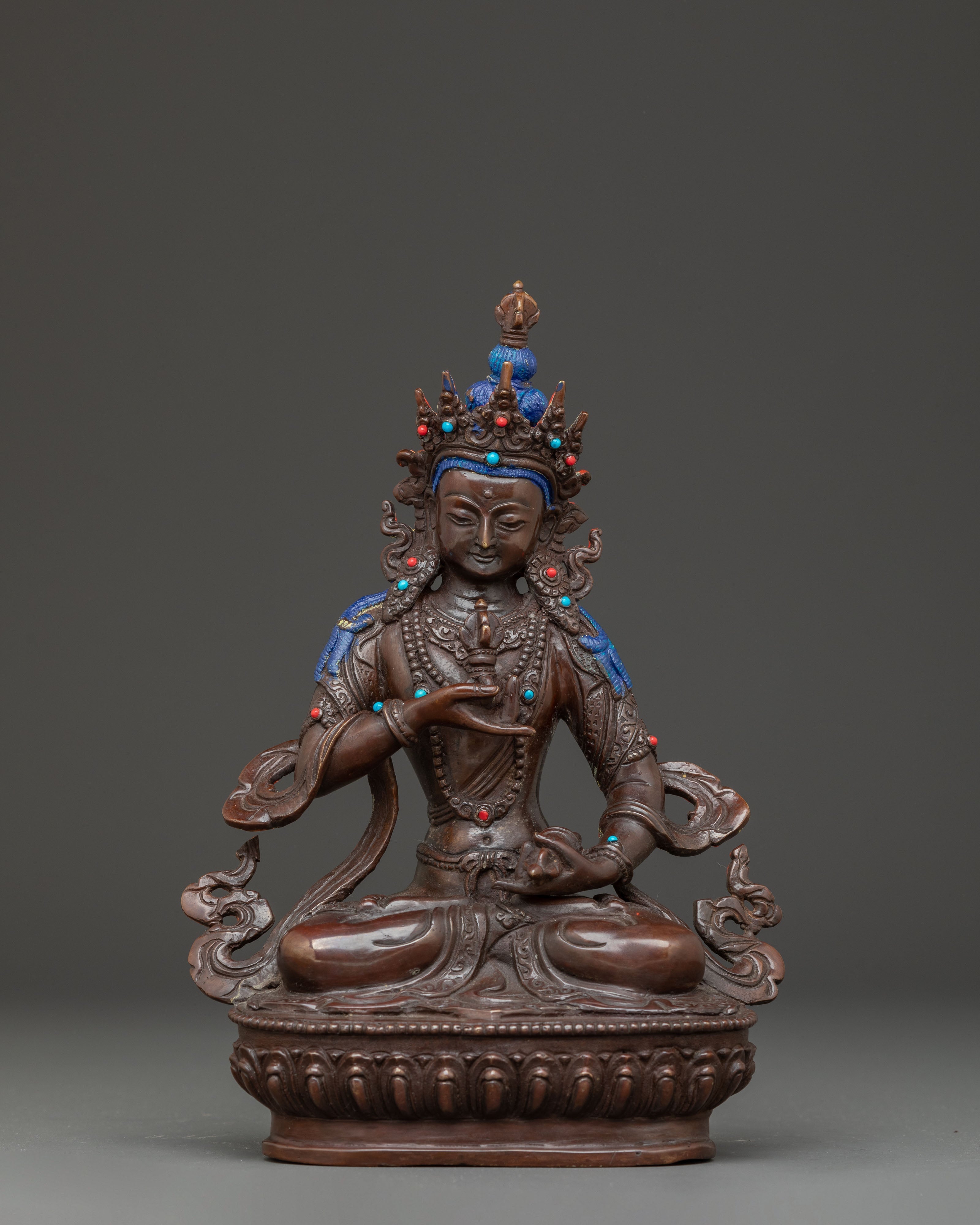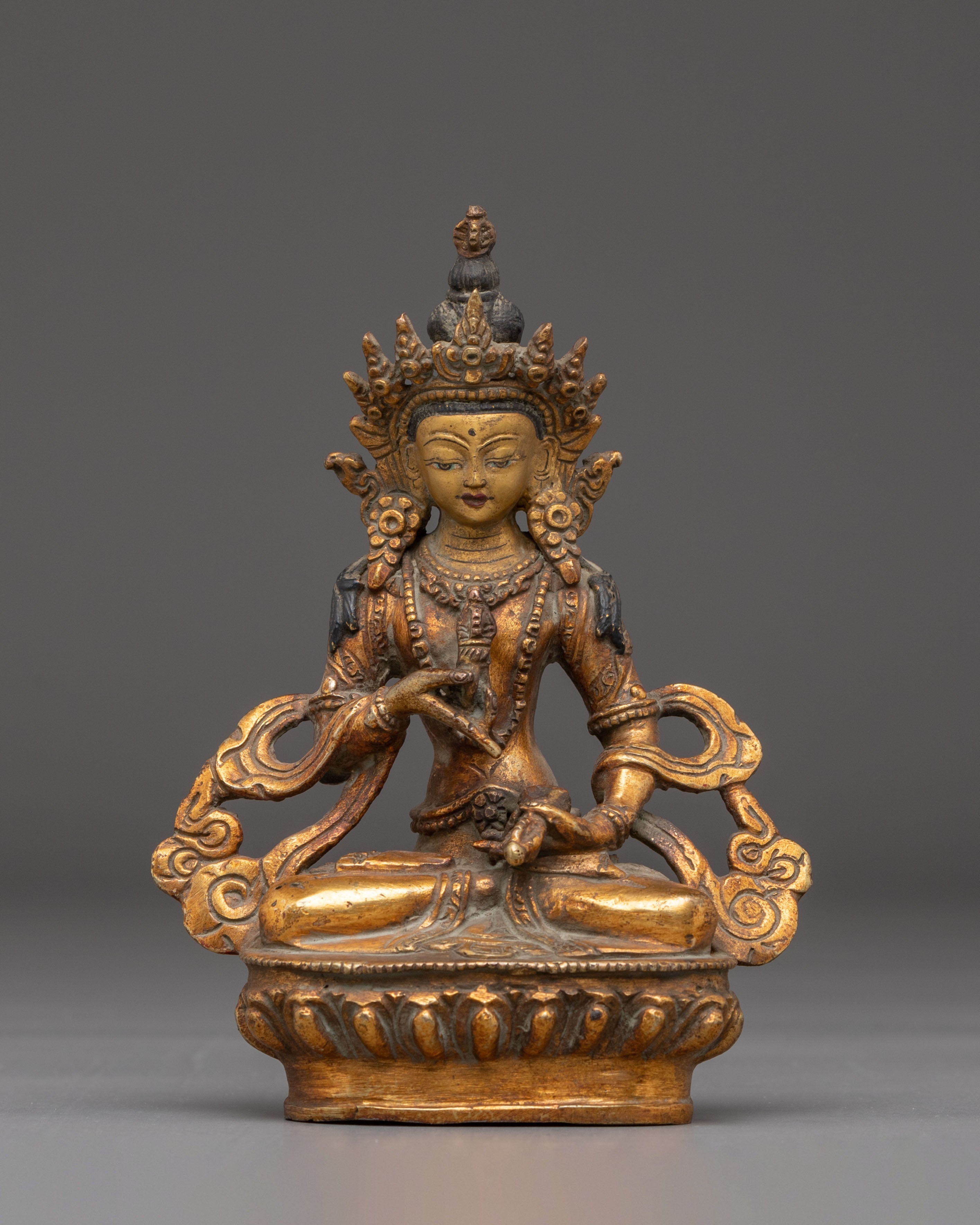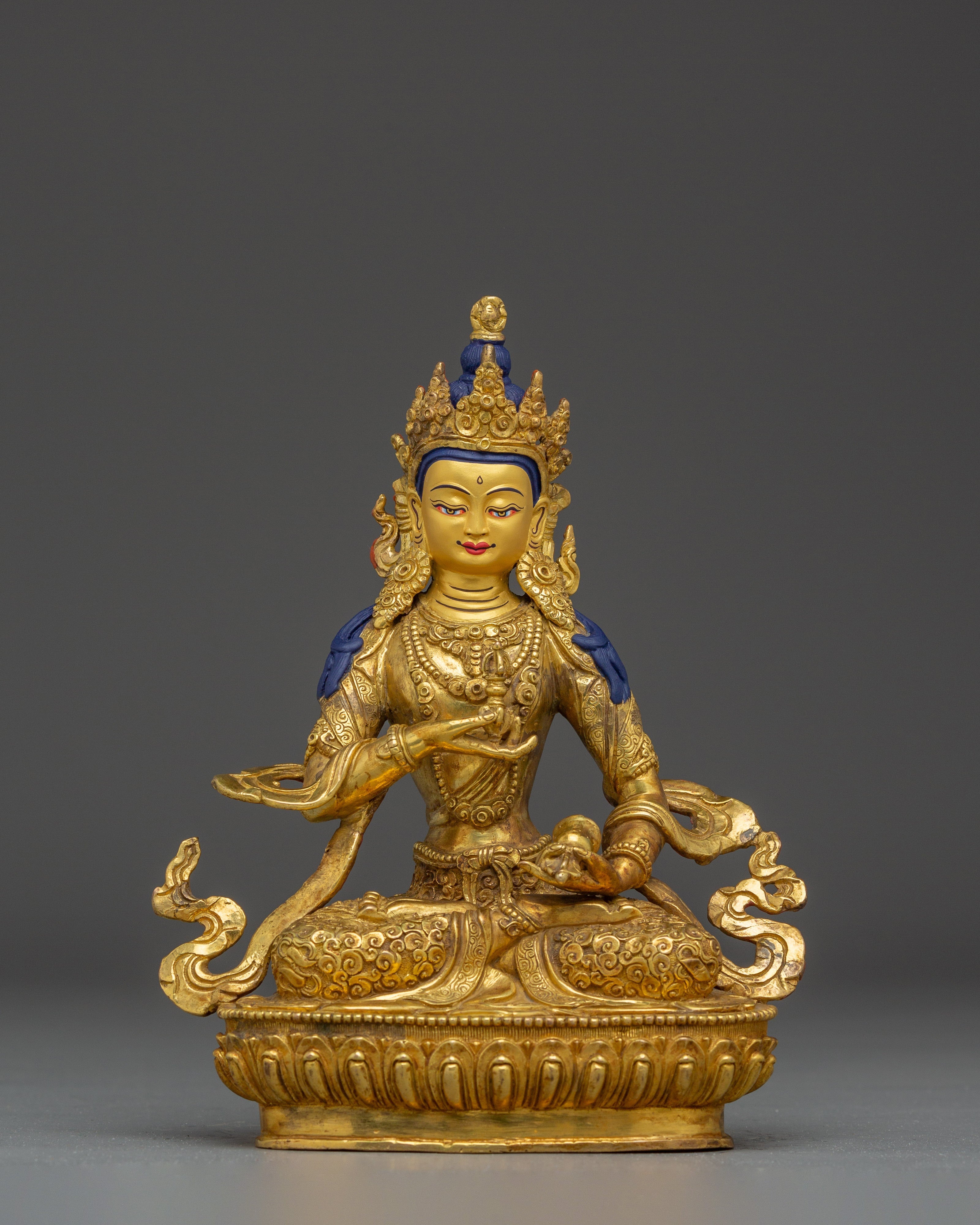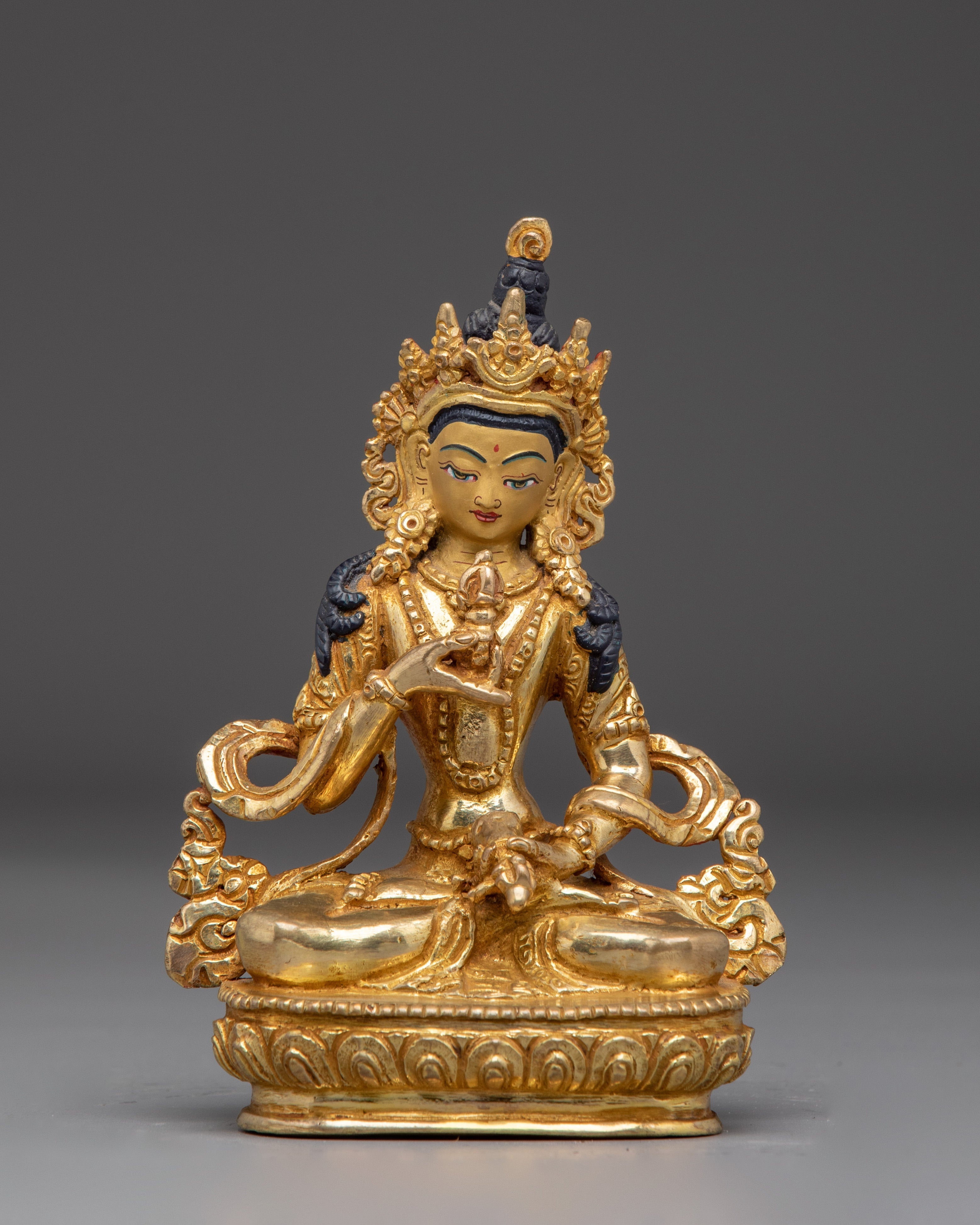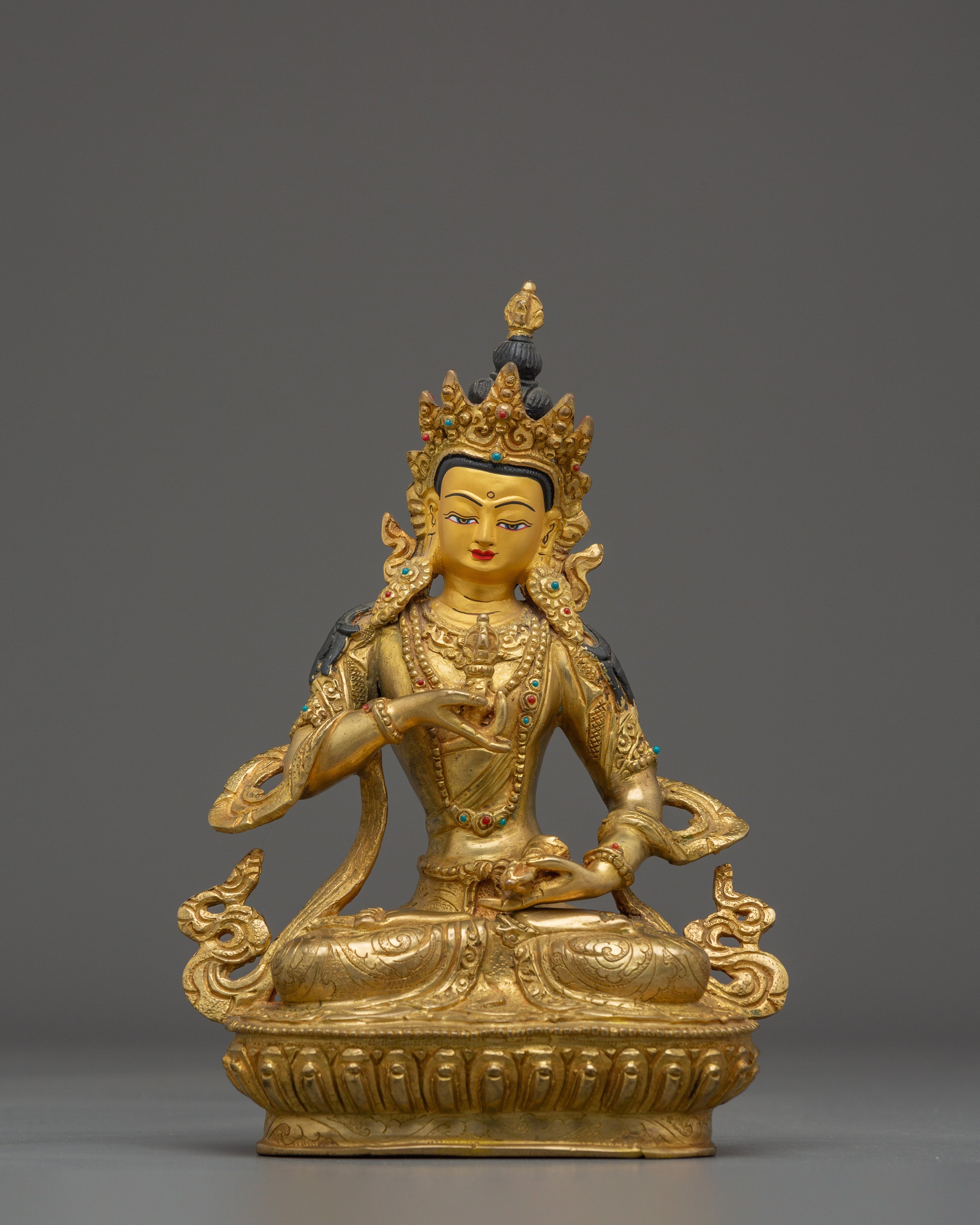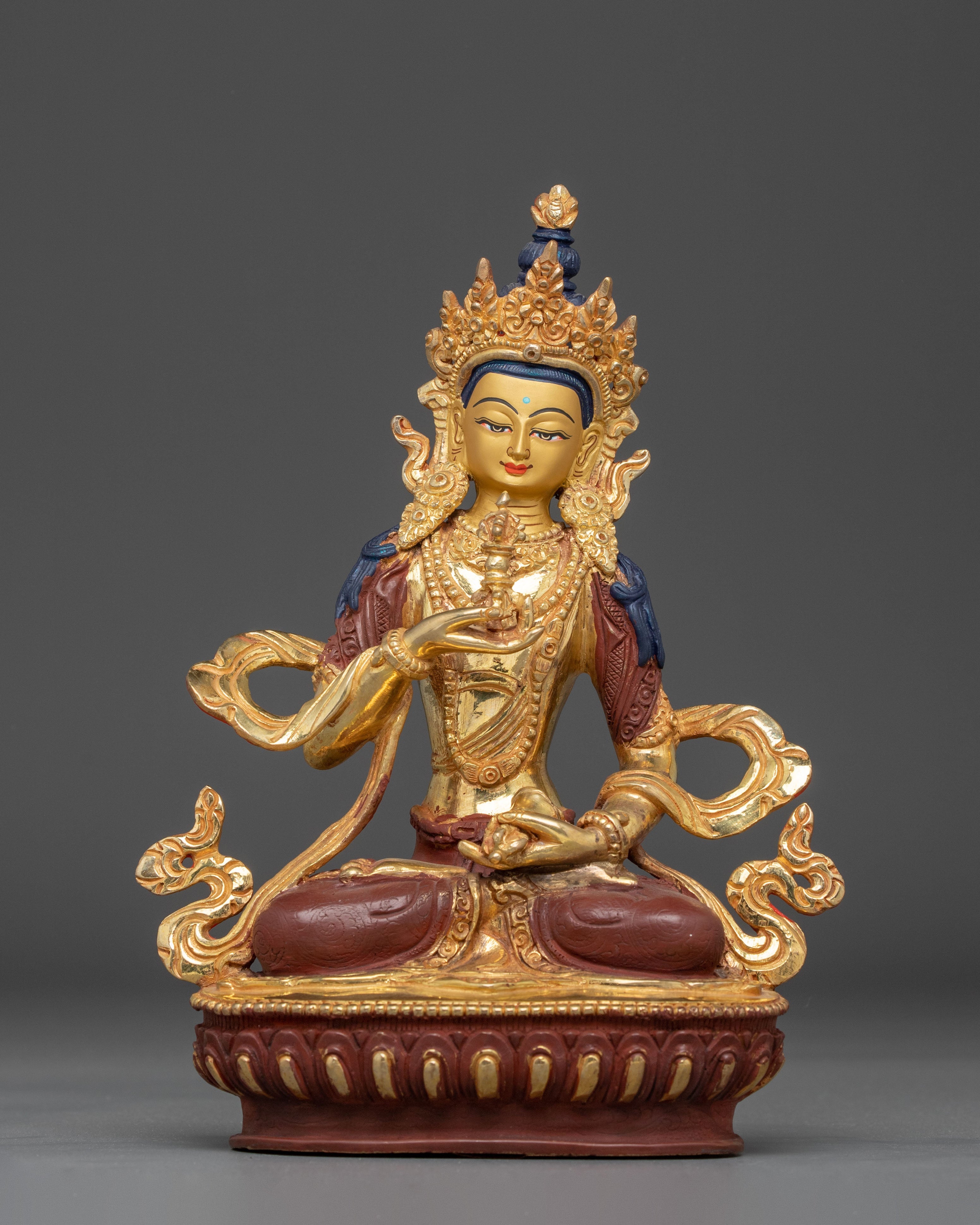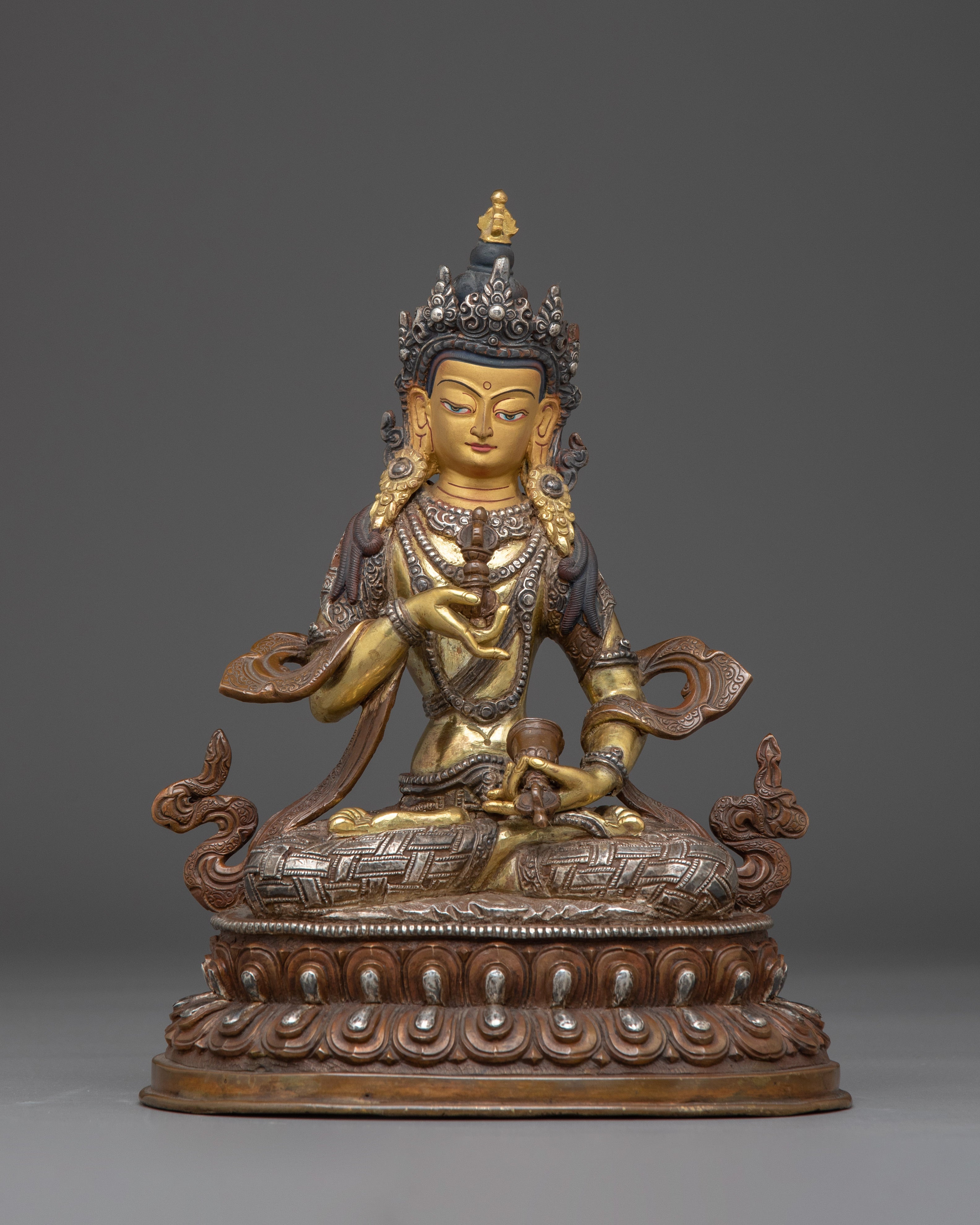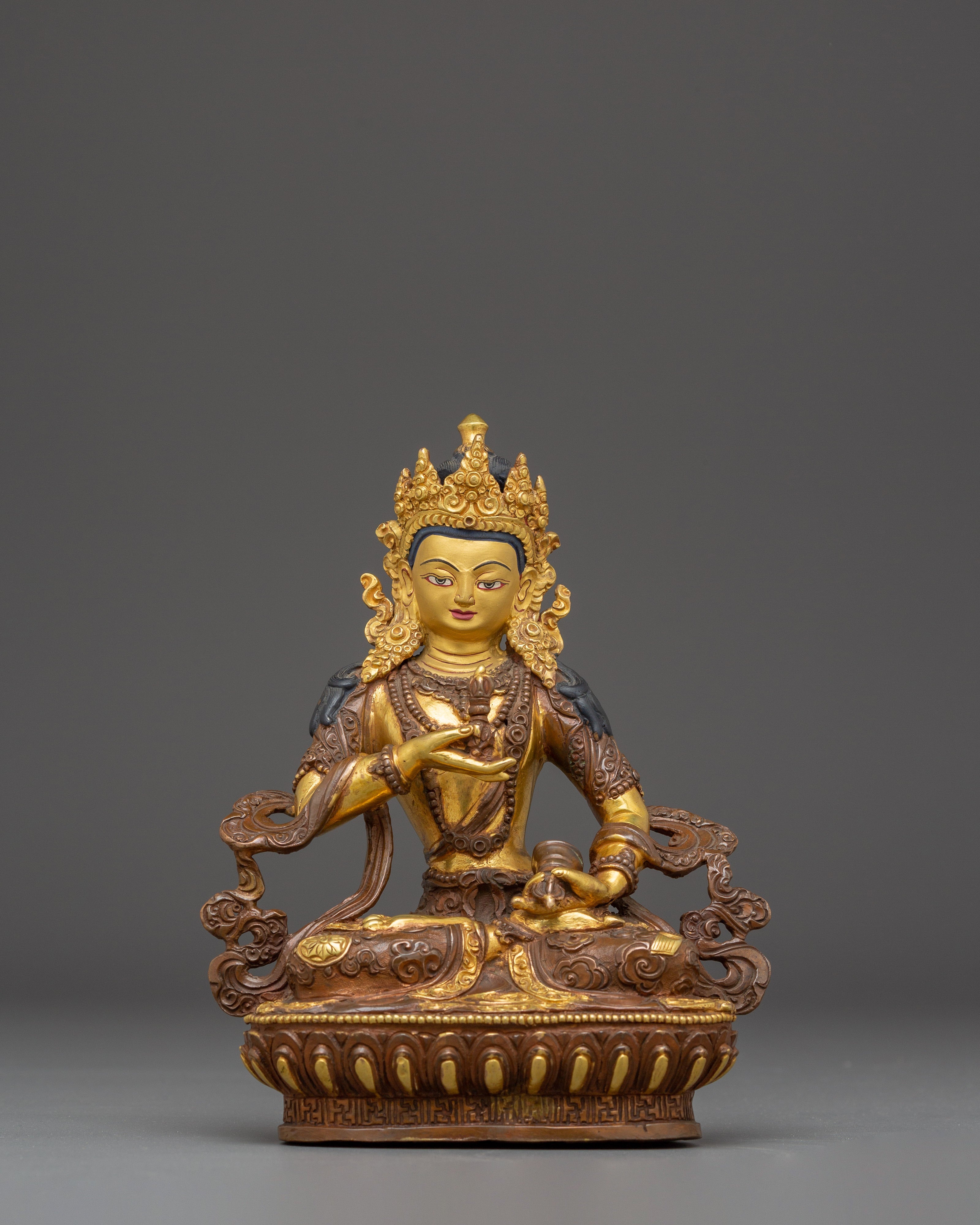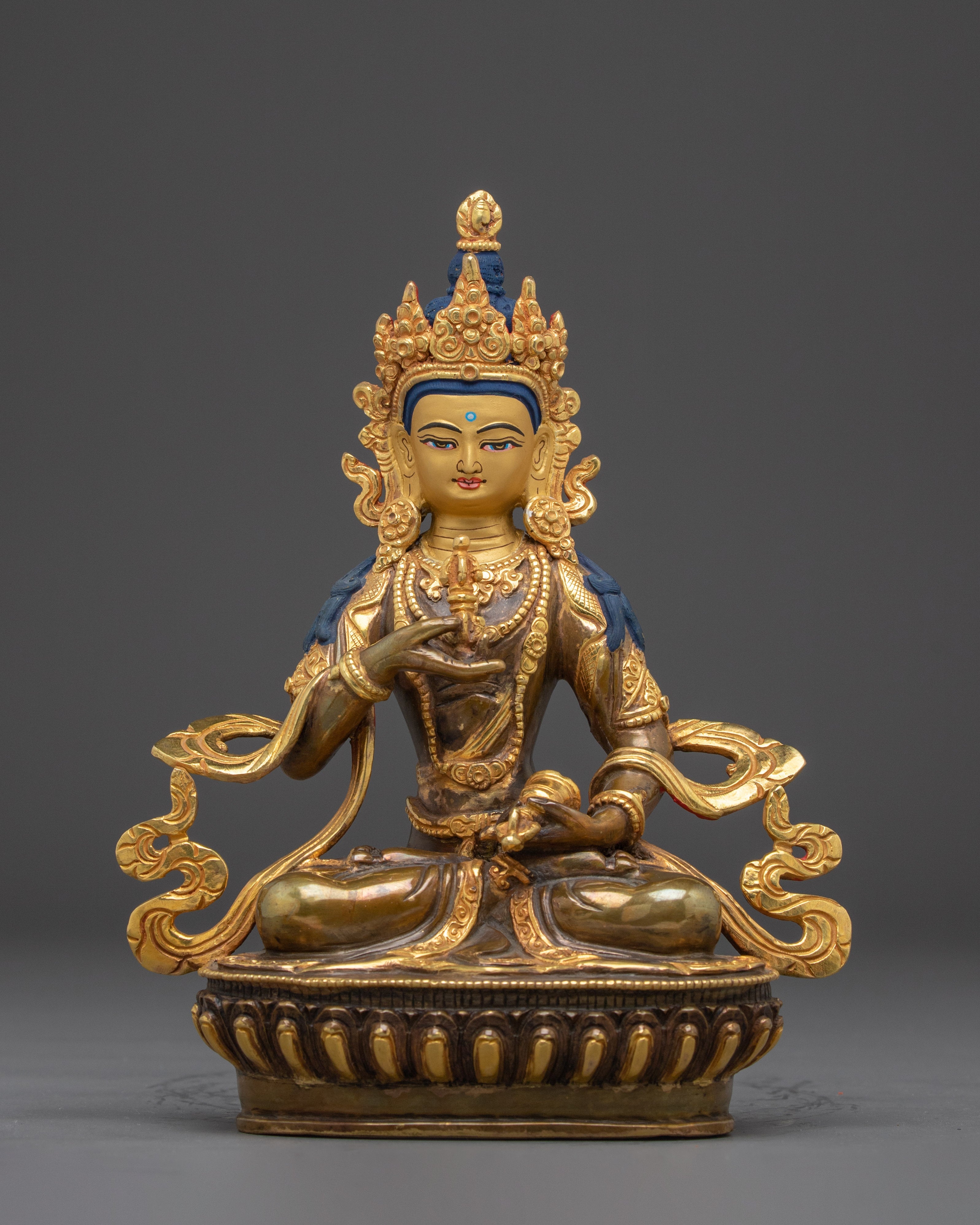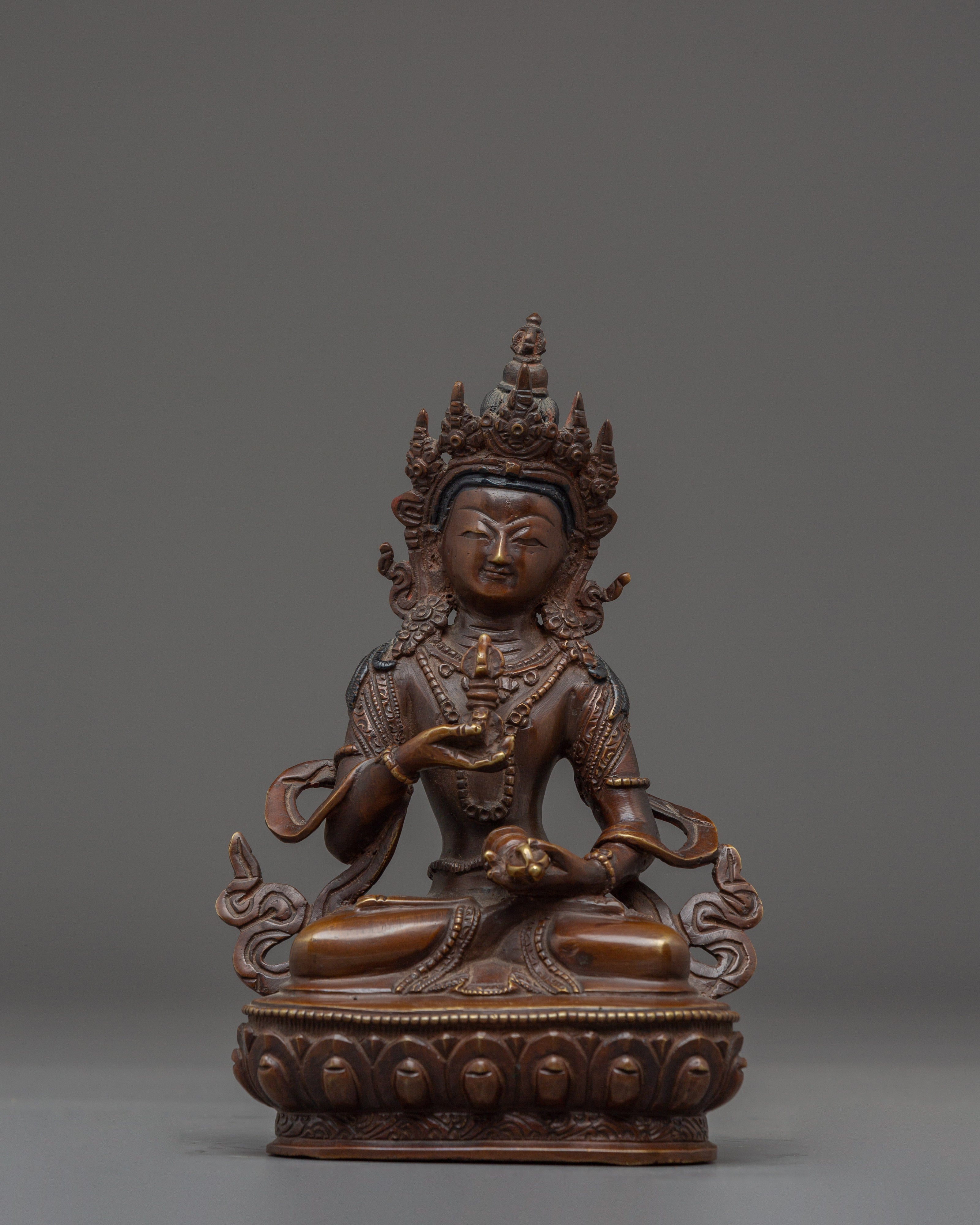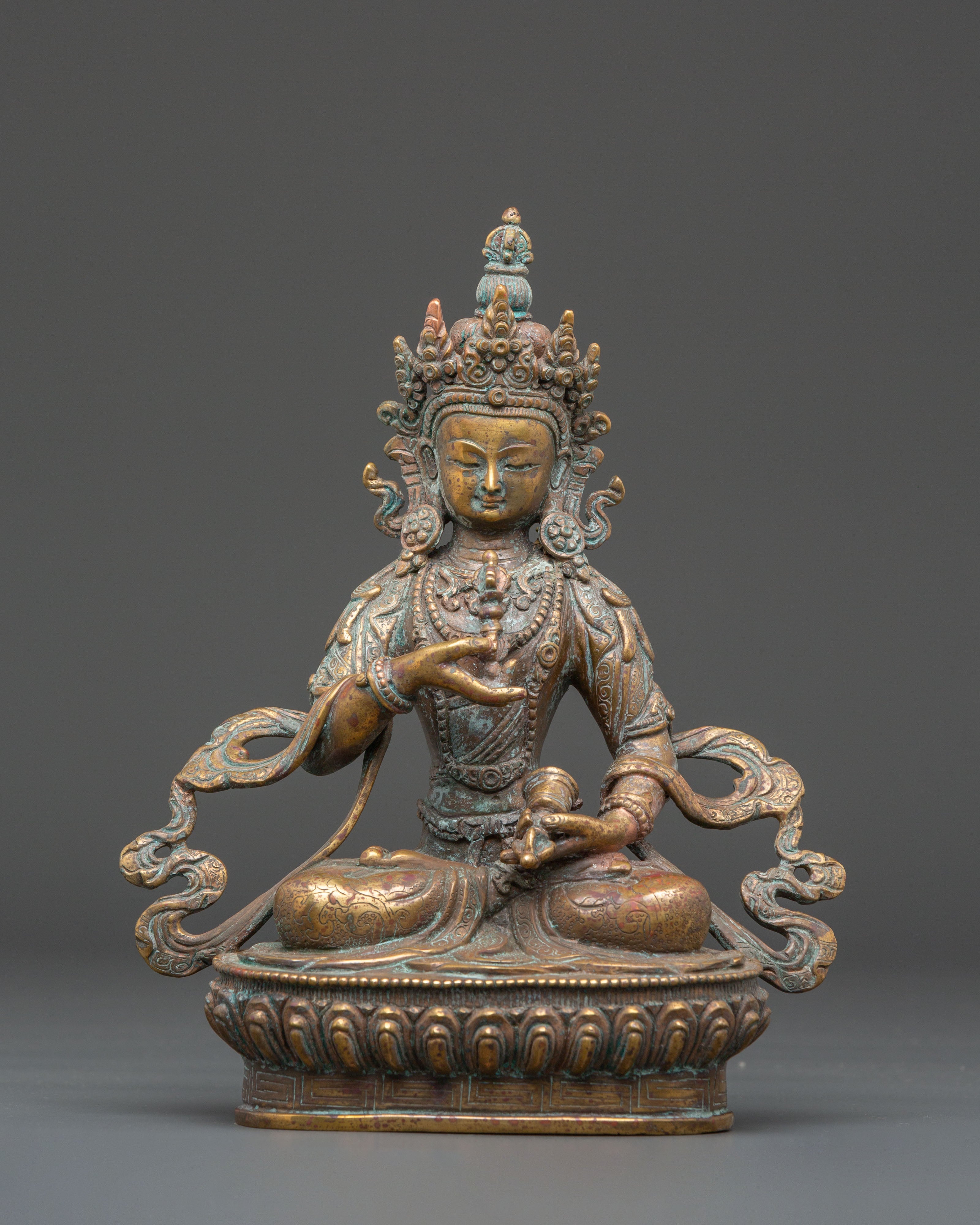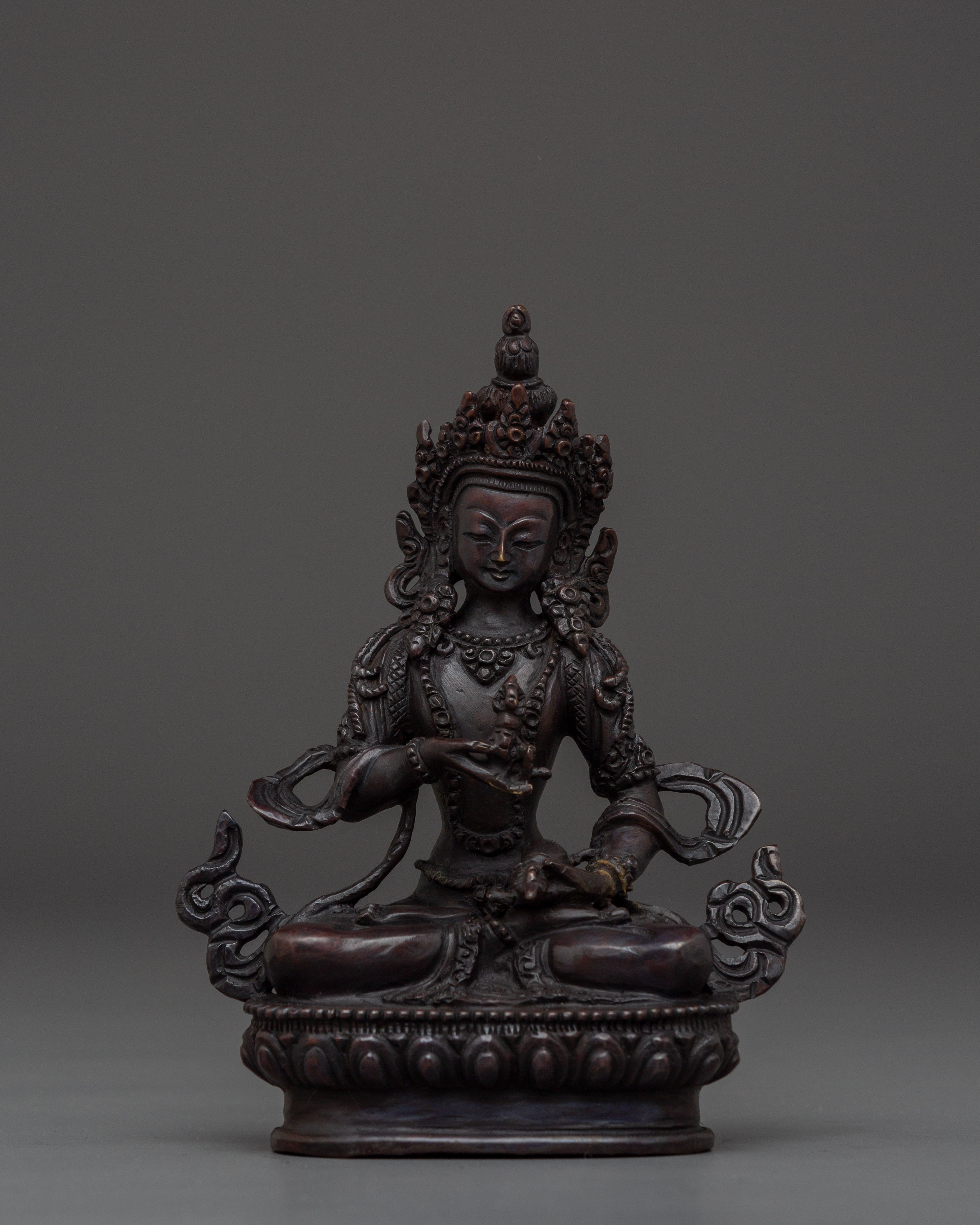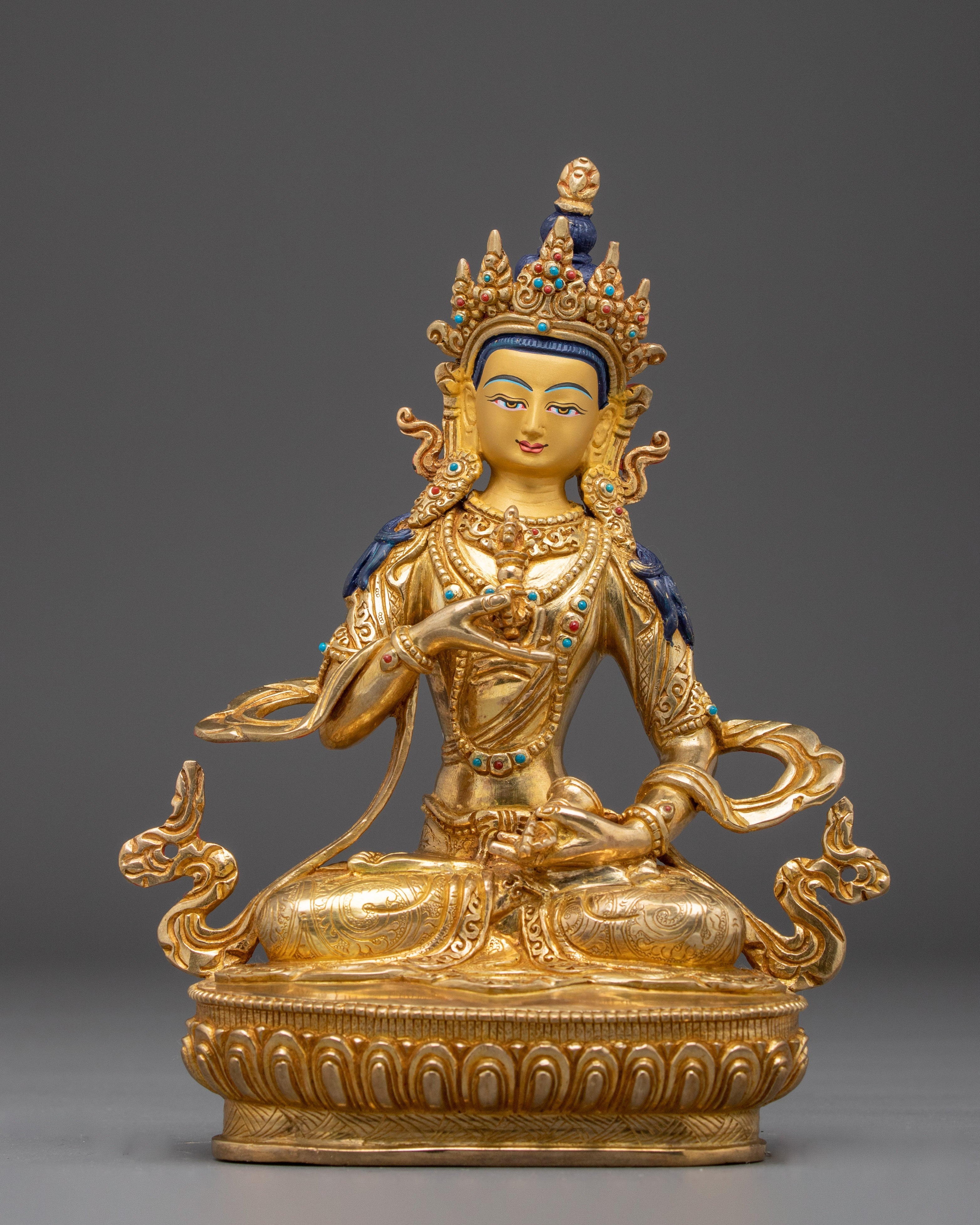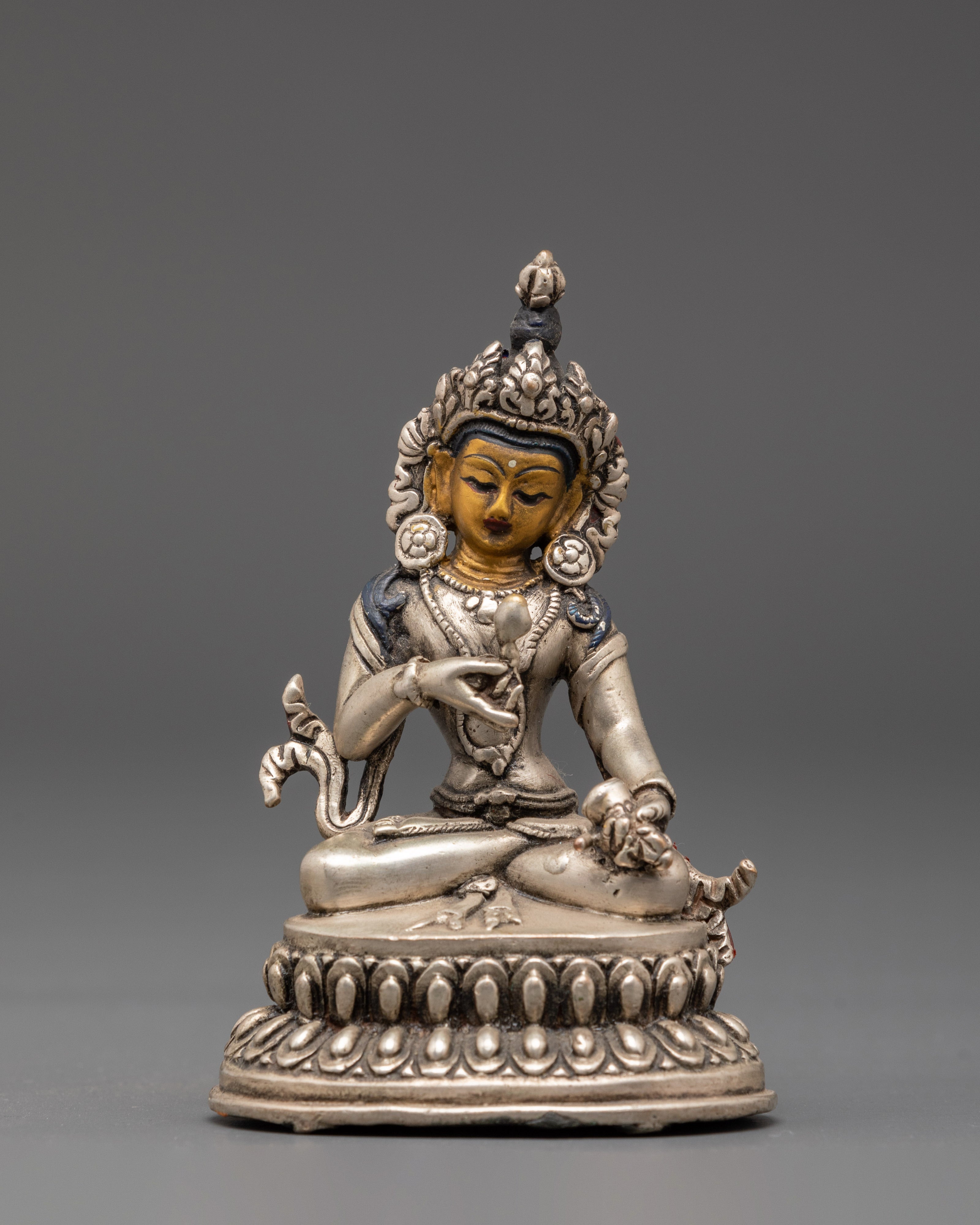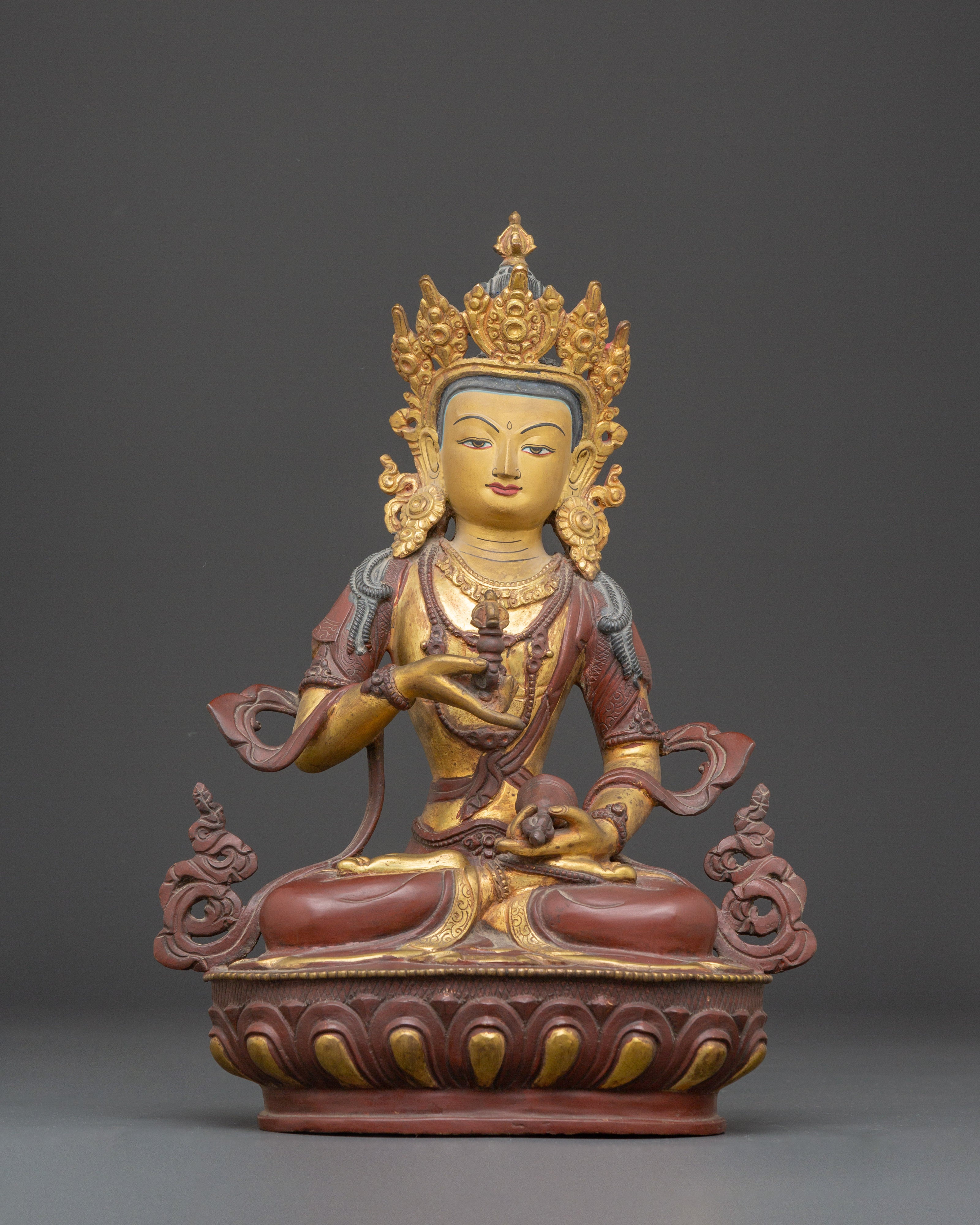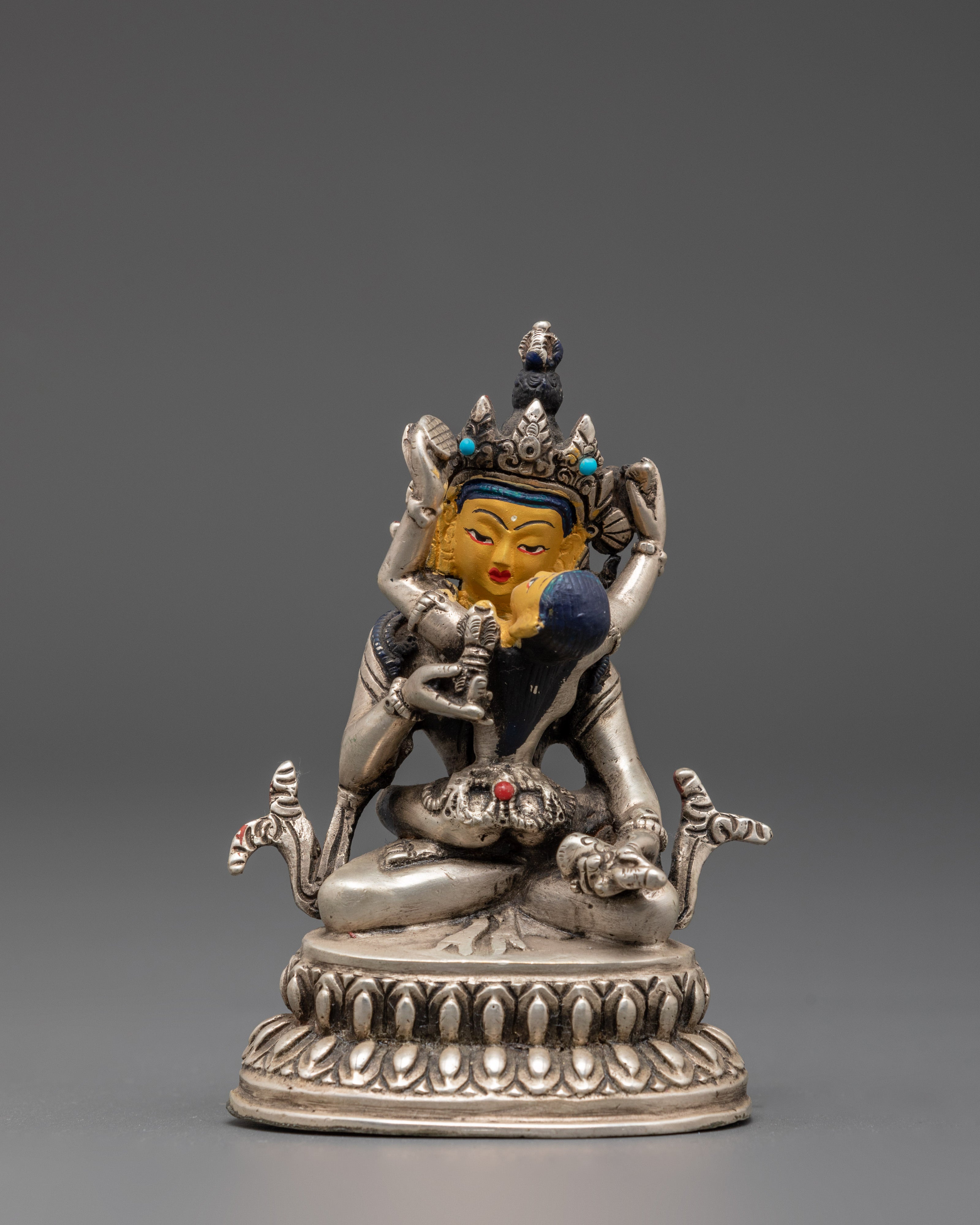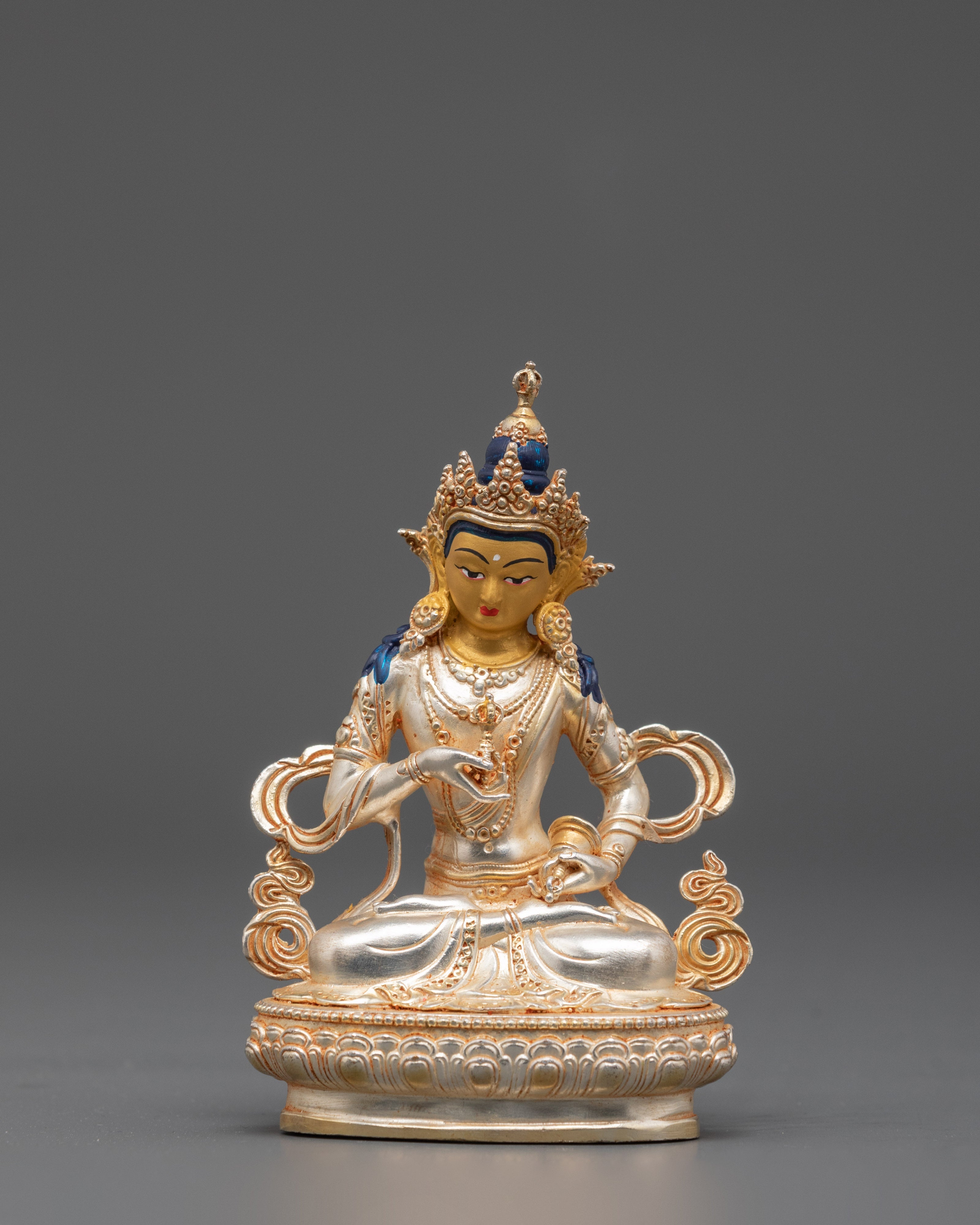Vajrasattva Statue
113 products
Showing 1 - 24 of 113 products
Vajrasattva: The Purification Deity in Tibetan Buddhism
Background and Significance: In Vajrayana Buddhism, Vajrasattva is a well-known figure, representing the embodiment of purification and the purifier of negativity. His name comprises two terms: "Vajra," signifying unbreakable purity, and "Sattva," meaning sentient being. Vajrasattva symbolizes the transformative power of purification, confession, and restoring one's inherent virtue.
Vajrasattva is significant due to his role as a guide and protector for practitioners seeking to cleanse their negative karma and overcome obstacles on their path to enlightenment. Vajrayana traditions, notably Tibetan Buddhism, place a strong emphasis on the practice of Vajrasattva. This practice is used to purify the mind and heart, enabling practitioners to progress on their spiritual journey with greater clarity and purity.
Attributes and Iconography: Typically depicted as serene with a white complexion, the Vajrasattva represents purity and clarity. He is often portrayed in a meditative posture, holding a bell (ghanta) in his left hand, symbolizing the union of compassion and wisdom, and a vajra (indestructible thunderbolt) in his right hand, held to his heart. His crown is adorned with the emblems of the five Buddha families, representing the transformation of the five poisons into the five wisdoms.
Vajrasattva's white color signifies his ability to dispel negativity, ignorance, and delusion. He is often depicted alongside Vajragarvi, the consort of Vajrasattva, symbolizing the integration of wisdom and skillful means in the purification process.
Associated Stories and Beliefs: The Vajrayana tradition places significant emphasis on the practice of Vajrasattva, especially in the context of deity yoga and purification rituals. This practice involves visualizations, confessing negative actions, and reciting the Vajrasattva mantra. Many practitioners are familiar with and repeat the Vajrasattva mantra as they seek purification:
"Om Vajrasattva Hum."
It is believed that the repetition of this mantra can cleanse the mind of impurities and purify negative karma. Vajrasattva practice is often undertaken as "Vajrasattva meditation," where the practitioner envisions themselves as Vajrasattva, surrounded by a sphere of white light, and engages in purification and confession.
In Vajrayana Buddhism, the practice of Vajrasattva is frequently integrated into rituals, initiations, and empowerments. It is a crucial tool for overcoming obstacles, undoing the effects of harmful deeds, and revitalizing one's spiritual journey.
Vajrasattva, the Purifier of Negativities, is a prominent figure in Vajrayana Buddhism, particularly in Tibetan Buddhist traditions. His significance lies in his ability to dispel obscurations and negative karma, allowing practitioners to progress with greater mental clarity and purity. The Vajrasattva practice underscores the transformative potential of purification, confession, and restoring one's innate compassion and wisdom.
